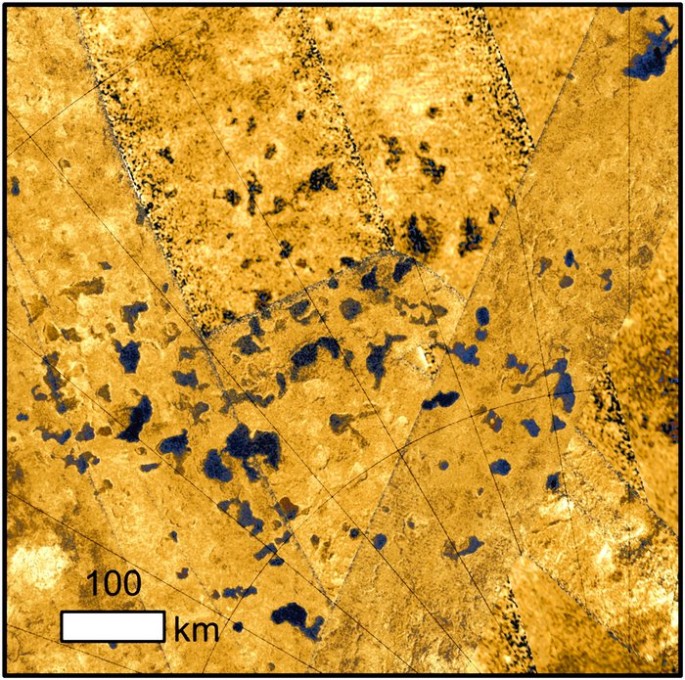Among all the other planets in the solar system, the one most similar to Earth is apparently Saturn's moon Titan. The moon possesses a thick atmosphere, dunes and even hydrocarbon lakes including polar winds that are all similar to the ones on Earth. Scientists also believe that Titan also has a network of rivers and seas that holds liquid methane.
Now a new study reveals another similar Earth-like feature where lakes and seas on the surface of Titan apparently form sinkholes on the surface of the moon.
Data was obtained from NASA's and the European Space Agency's Cassini probe where it detected sinkholes occurring on the surface of the natural satellite. Titan currently holds temperatures of -292 degrees where lakes contain liquid methane and ethane unlike water on Earth. Sinkholes on Earth form via erosion of rocks that are easily dissolved such as limestone.
ESA scientists have taken measurements and determined how long for sinkholes to be created as they dissolve on certain regions on Titan's surface. Using data taken from the Cassini probe, the scientists have discovered that it will take 50 million years to form a 300 feet wide hole on the moon's surface.
According to lead author of the study Thomas Cornet of ESA, the team has determined that this dissolution process has been occurring on Titan at a rate of 30 times slower as opposed to Earth's sinkholes since Titan experiences a longer year where rains only happen during Titan's summer season.
He adds that this dissolution event is apparently one of the major factors in Titan's landscape evolution where the lakes could have originated from.
To date, Cassini recently completed a flyby of another moon of Saturn called Dione where it captured a series of images of its craggy surface. In August, the probe will conduct its final flyby of Dione where it will swoop down 295 miles within the moon's orbit.
Its final stage of the mission will occur later this year where Cassini will gain unprecedented views of Saturn's majestic ring plane.
This study is published in the Journal of Geophysical Research.



























